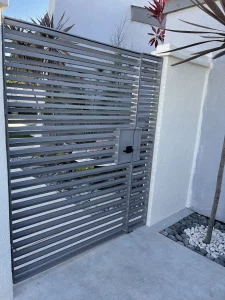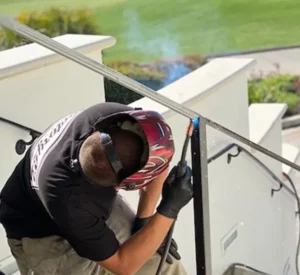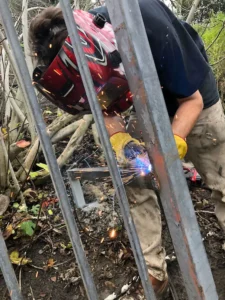Welding is a crucial process in various industries that involves joining two or more metal components together. When it comes to welding, there are numerous techniques available, each with its own advantages and disadvantages. Two popular welding methods that are frequently compared are stick welding and MIG welding. In this article, we will explore the basics of both techniques, compare their key differences, and discuss factors to consider when choosing between them.
Understanding the Basics of Welding
Before diving into stick welding and MIG welding, let’s first have a brief overview of welding as a whole. Welding is the process of fusing separate metal pieces together using heat. This heat causes the metal to melt and then solidify, creating a strong bond between the components. Welding is widely used in industries such as construction, automotive, and manufacturing, where the durability and strength of joints are of utmost importance.
Definition of Welding
Welding is the fabrication process that brings together two or more pieces of metal by heating, melting, and cooling. It creates a permanent bond, producing a joint that is as strong as the base materials themselves, or sometimes even stronger.
Importance of Welding in Industrial Applications
In the industrial sector, welding plays a pivotal role. It allows manufacturers to create structures and equipment that can withstand harsh conditions, heavy loads, and extreme temperatures. From large steel structures to intricate components, welding ensures the integrity and reliability of various products and infrastructure.
One example of the importance of welding in industrial applications is in the construction industry. When constructing buildings, welding is used to join steel beams and columns, creating a sturdy framework that can support the weight of the structure. Without welding, it would be nearly impossible to build tall skyscrapers or large industrial complexes.
In the automotive industry, welding is essential for the production of vehicles. It is used to join different parts of the car, such as the chassis, body panels, and exhaust system. Welding ensures that these components are securely attached, providing structural integrity and safety for the vehicle and its occupants.
Moreover, welding is crucial in the manufacturing sector. It is used to fabricate various products, ranging from machinery and equipment to consumer goods. For example, in the production of heavy machinery, welding is used to join different metal components, creating a robust and reliable machine that can withstand heavy usage and demanding conditions.
Welding also plays a significant role in the aerospace industry. Aircraft are subjected to extreme conditions, including high altitudes, rapid temperature changes, and intense vibrations. Welding is used to join critical components of an aircraft, such as the wings, fuselage, and engine parts, ensuring that they can withstand the stresses and strains of flight.
Furthermore, welding is not limited to industrial applications. It is also used in artistic and creative endeavors. Artists and sculptors use welding techniques to create intricate metal sculptures and installations. Welding allows them to transform raw metal into beautiful and expressive works of art.
In conclusion, welding is a fundamental process that brings together metal pieces to create strong and durable joints. Its importance in various industries cannot be overstated, as it enables the construction of structures, production of vehicles and machinery, and even the creation of artistic masterpieces. Understanding the basics of welding is essential for anyone interested in the field, as it forms the foundation for more advanced techniques and applications.
Introduction to Stick Welding
Stick welding, also known as shielded metal arc welding (SMAW), is one of the oldest and most versatile welding techniques. It has been used for decades in various industries, including construction, shipbuilding, and automotive repair. Stick welding involves the use of a consumable electrode coated in flux, which melts and creates a protective gas shield when heated. This shield prevents the weld from contamination by atmospheric gases, ensuring a strong and durable bond between the metal pieces.
Stick welding is a highly reliable method that can be used to join a wide range of metals, including steel, stainless steel, cast iron, and aluminum. It is particularly well-suited for heavy-duty applications, such as welding thick plates or structural components. The process is known for its ability to produce strong and high-quality welds, making it a popular choice for professionals and hobbyists alike.
Process of Stick Welding
The process of stick welding is relatively straightforward. It utilizes a direct current power source, creating an electric arc between the electrode and the base metal. The arc generates intense heat, causing the electrode to melt and form a molten pool. As the welder moves the electrode along the joint, the molten pool solidifies, creating a strong bond between the metal pieces.
Stick welding requires a steady hand and precise control of the electrode. The welder must maintain a consistent arc length and travel speed to ensure proper penetration and fusion of the metal. Different types of electrodes are available, each with its own characteristics and applications. Some electrodes are designed for specific metals or welding positions, while others offer enhanced performance in challenging environments.
One of the advantages of stick welding is its versatility. It can be used in various positions, including flat, horizontal, vertical, and overhead. This flexibility allows welders to tackle a wide range of projects, from building structures to repairing machinery. Stick welding is also well-suited for outdoor environments, as it does not require a shielding gas like other welding methods. This makes it a popular choice for construction sites, where wind and weather conditions can affect the welding process.
Pros and Cons of Stick Welding
Stick welding offers several advantages that make it a preferred choice for many welders. Its ability to weld in outdoor environments and tolerate rusty or dirty materials makes it a versatile and practical option. Stick welding is relatively easy to learn, making it accessible to beginners who are new to welding. It requires minimal equipment, which can be a cost-saving factor for those starting out in the field.
However, stick welding does have its limitations and drawbacks. Compared to other welding methods, it can be slower, as the welder needs to frequently replace the consumable electrode as it gets consumed during the welding process. The process also produces more smoke and sparks, requiring proper ventilation and safety precautions. Welders must wear protective clothing, including gloves, helmet, and clothing, to shield themselves from the intense heat and potential hazards.
Despite these challenges, stick welding remains a popular and widely used welding technique. Its versatility, reliability, and ability to produce strong welds make it an essential skill for welders in various industries. With proper training and practice, stick welding can be mastered, allowing welders to create durable and high-quality welds that stand the test of time.
Introduction to MIG Welding
Metal Inert Gas (MIG) welding, also known as Gas Metal Arc Welding (GMAW), is a widely used welding process, particularly in industries that require high productivity and speed. MIG welding involves the use of a continuous consumable wire electrode and a shielding gas to protect the weld from contamination.
MIG welding is a versatile process that can be used to join a variety of metals, including steel, stainless steel, and aluminum. It is commonly used in automotive, aerospace, and construction industries, as well as in the fabrication of metal furniture and structures.
The popularity of MIG welding can be attributed to its efficiency and ease of use. It allows for faster welding speeds compared to other processes, resulting in increased productivity. The continuous wire electrode eliminates the need for frequent electrode changes, further enhancing efficiency.
One of the key advantages of MIG welding is its ability to provide excellent control over the weld pool. The welder can adjust the voltage, wire feed speed, and shielding gas flow rate to achieve the desired weld quality. This control allows for precise and consistent welds, making MIG welding suitable for applications that require high-quality and aesthetically pleasing welds.
Process of MIG Welding
In MIG welding, a direct current power source is used to create an electric arc between the wire electrode and the base metal. The heat generated by the arc causes the electrode to melt continuously, forming a weld pool. The shielding gas, typically a mixture of argon and carbon dioxide, flows through the welding gun, protecting the molten metal from atmospheric gases.
The wire electrode, which is fed continuously from a spool, acts as both the filler material and the electrode. It is guided through the welding gun and melted by the heat of the arc. The molten metal from the electrode mixes with the base metal, creating a strong and durable weld.
MIG welding can be performed in various positions, including flat, horizontal, vertical, and overhead. The choice of position depends on the specific welding application and the accessibility of the joint.
Pros and Cons of MIG Welding
MIG welding offers several advantages. It allows for high welding speeds, provides excellent control over the weld pool, and produces clean and aesthetically pleasing welds. Additionally, MIG welding can be easily automated and is suitable for welding thin sheets of metal. The versatility of MIG welding makes it a preferred choice for many industries.
However, MIG welding also has its limitations. It requires access to a constant supply of shielding gas, which adds to the overall cost of the process. The equipment setup for MIG welding can be more complex compared to other welding processes, requiring a power source, wire feeder, welding gun, and gas cylinder. This complexity may result in higher initial setup costs.
Furthermore, MIG welding is not suitable for outdoor applications or in windy conditions, as the shielding gas can be easily blown away, compromising the quality of the weld. Additionally, MIG welding may not be suitable for welding thick materials, as it may result in incomplete penetration and weaker welds.
Despite these limitations, MIG welding remains a popular choice for many applications due to its efficiency, versatility, and ability to produce high-quality welds.
Key Differences Between Stick and MIG Welding
Now that we have explored the processes of both stick welding and MIG welding, let’s compare some key differences between these two techniques.
Comparison of Techniques
Stick welding is characterized by its versatility, allowing it to be used for various types of joints and in different positions. It is commonly used in construction, shipbuilding, and pipeline welding. The stick welding process involves using a consumable electrode coated in flux, which creates a protective gas shield and forms a slag that covers the weld bead. This slag needs to be chipped off after each pass, which can be time-consuming.
On the other hand, MIG welding excels at welding thin materials and provides better control over the weld pool. It is widely used in automotive, aerospace, and manufacturing industries. MIG welding uses a continuous wire electrode that is fed through a welding gun, along with a shielding gas, to create the weld. This process allows for faster and cleaner welds, as there is no slag to remove.
Comparison of Efficiency and Speed
MIG welding is generally faster than stick welding due to its continuous electrode and higher deposition rates. The continuous wire feed allows for a constant supply of filler material, resulting in faster welding speeds. This makes MIG welding ideal for production environments where speed is crucial.
Stick welding, however, can be more time-consuming, especially when preparing the electrode and handling slag removal. Each time a new electrode is needed, the welder must stop and replace it, which can slow down the welding process. Additionally, the need to chip off the slag after each pass adds to the overall time required for stick welding.
Comparison of Cost and Maintenance
Stick welding equipment tends to be more affordable and portable compared to MIG welding equipment. The simplicity of stick welding machines makes them less expensive to purchase and maintain. They do not require a constant supply of shielding gas, which further reduces the cost. Stick welding also requires minimal maintenance and consumable replacement, as the electrodes have a long shelf life.
In contrast, MIG welding equipment can be more expensive, requiring a constant supply of shielding gas and occasional consumable replacement. The need for a shielding gas, such as argon or a mixture of gases, adds to the overall cost of MIG welding. The welding wire also needs to be replaced regularly, as it is consumed during the welding process. However, MIG welding offers higher productivity and efficiency, which can offset the initial investment in equipment.
Choosing Between Stick and MIG Welding
When selecting the most suitable welding method, various factors must be taken into consideration. These factors include the type of materials being welded, the environment in which the welding will take place, as well as the specific requirements of the project.
Factors to Consider
The thickness and type of metal, the desired strength of the weld, and the availability of a power source and shielding gas are crucial factors that influence the choice between stick welding and MIG welding.
Suitability for Different Materials
Stick welding is commonly employed for welding heavy steel structures, pipelines, and repair work. MIG welding, on the other hand, is widely used for welding aluminum, stainless steel, and automotive body repairs.
Suitability for Different Environments
Stick welding’s ability to perform outdoors and its tolerance for adverse weather conditions make it a preferred choice for construction and field repair. Conversely, MIG welding’s need for a controlled environment, such as an indoor workshop, suits it better for controlled manufacturing environments.
Ultimately, the choice between stick welding and MIG welding depends on the specific requirements of the welding project. Understanding the differences and characteristics of each technique enables welders to make informed decisions and achieve optimal results.







